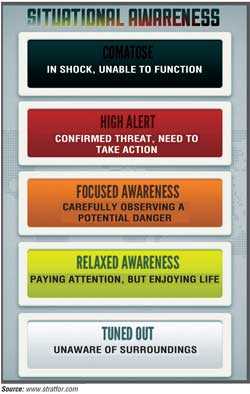Tuesday Nov 25, 2025
Tuesday Nov 25, 2025
Wednesday, 15 May 2019 01:39 - - {{hitsCtrl.values.hits}}
In Sri Lanka we witnessed one of the worst days in our life on Easter Sunday, when bombings left over 250 people dead and more than 500 people wounded.
Sri Lanka’s top defence official resigned on Thursday, 25 April, over security failures and according to sources the Sri Lankan Government admitted that “major” intelligence lapses led to the horrific coordinated attacks.
Now we are in a time which reminds us of the era prior to 2009, when families members would select two to three modes (like train and bus) for different family members to use without travelling together to minimise the loss to their family.

Anyway we have a tendency of forgetting the past quickly and the same problem of forgetting has affected many decisions in the last few years. Even the vehicle parked suspiciously very close to home has just been ignored by many, merely by thinking that there is no threat at all. But now the threat has come and you need to have certain good practices in your life.
The article titled ‘Building Blocks of Personal Security: Situational Awareness’ by stratfor.com has explained five different levels of attention, namely as ‘tuned out,’ ‘relaxed awareness,’ ‘focused awareness,’ ‘high alert’ and ‘comatose’.
By using the example of driving, degrees of attention people practice has been explained in the article. Accordingly, the first level, tuned out, is similar to when a person is driving in a very familiar environment or is engrossed in thought, a daydream, a song on the radio, or even by the kids fighting in the backseat. Increasingly, cell-phone calls and texting are also causing people to tune out while they drive. A person experiences tuned-out driving when they arrive somewhere without really thinking about their trip.
The second level of awareness, relaxed awareness, is similar to defensive driving. This is a state in which one is relaxed but is also watching the other cars on the road and looking ahead for potential hazards. For example, if one is approaching an intersection and another driver looks like he may not stop, tapping on the brakes to slow down is a good defensive move. Defensive driving does not make a person weary, and one can drive this way for a long time if they have the discipline to keep themselves from slipping into a tuned-out mode. While practicing defensive driving, one can still enjoy the trip, look at the scenery and listen to the radio, but they cannot allow themselves to get so engrossed in those distractions that they ignore everything else. Although relaxed and enjoying the drive, one is still watching for road hazards, maintaining a safe following distance and keeping an eye on nearby drivers.
The next level of awareness, focused awareness, is akin to driving in hazardous road conditions. One must practice this level of awareness when driving on icy or slushy roads — or the pothole-infested roads populated by erratic drivers that exist in many developing countries. When driving in such an environment, one needs to keep two hands on the wheel at all times and have their attention totally focused on the road and the other drivers around them, never taking their eyes off the road or letting their attention wander. There is no time for cell-phone calls or other distractions. The level of concentration this type of driving requires makes it extremely tiring and stressful. A drive that would normally seem routine is exhausting under these conditions because it demands prolonged and total concentration. The fourth level of awareness is high alert. This is the level that induces an adrenaline rush, a prayer and a gasp for air all at the same time when one sees a car run a stop sign and pull into a busy intersection. High alert can be scary, but at this level one is still able to function — they can hit their brakes and keep their car under control. In fact, the adrenaline rush one gets at this stage can sometimes aid their reflexes.
The last level of awareness, comatose, is what happens when one literally freezes at the wheel and cannot respond to stimuli, either because they have fallen asleep or, at the opposite end of the spectrum, because they are petrified. It is this panic-induced paralysis that is most important for situational awareness. The brain ceases to process information and one simply cannot react to the reality of the situation, risking shock. Many times when this happens, a person can go into denial, believing “this cannot be happening to me,” or the person can feel as though he or she is observing the event rather than actually participating in it. Often, the passage of time will seem to grind to a halt. Crime victims frequently report experiencing this sensation and often note they were unable to act as a crime unfolded.

According to Pendas (2014), the challenge for citizens is putting this information into action by finding the appropriate level for the given situation. Being tuned out while you are driving on a road that is badly damaged and riddled with potholes is probably a bad idea. The reason that we need to find the appropriate level is that when you jump levels, it leaves you at a disadvantage.
Let’s go back to the previous example. If you are driving on a really bad road tuned out, and you unexpectedly hit a big hole, you jump from tuned out to focused awareness or comatose. Either way, it is bad. Your mind is trying to play catch up. You will either not be able to respond or you will have a knee-jerk type reaction which may or may not be the correct response. It doesn’t sound so bad for a pothole but change the scenario to being attacked. You don’t want to play catch up in that situation or worse, not respond.
Think of the levels of awareness as changing gears in a manual transmission. You wouldn’t want to go from first gear to fifth, because the car putters and stalls. It works the same way when you aren’t paying attention and are attacked, you jump from tuned out to comatose. Pendas (2014) in the article of ‘Levels of Awareness’ (https://stayingsafe-selfdefense.com/2014/01/24/levels-of-awareness/) further explained:
“Being tuned out to your surroundings all day can end badly for you but staying in high alert or focused awareness isn’t good either. Your mind needs rest and staying in high alert or focused awareness can be very taxing. Staying in the relaxed awareness level allows for you to enjoy your day-to-day activities without burning your mind out. Furthermore, it helps you to move up in the levels so you don’t skip levels and stall out. As you can see, the levels of awareness are a simple concept that can pay off right away for your safety. One way to make this a habit and increase your skill in it, is to consciously move up and down the levels throughout the day.”
As Sri Lankans, we need to be very concerned about the current situation in the country and we should have proper discipline of awareness. We need to maintain this as ‘good practice’ forever! Sustainability is the key to the development of human being and development to the nation.
(The writer is a Professor in Management at Department of Management Studies, Open University of Sri Lanka. You can reach Professor Abeysekera on [email protected].)